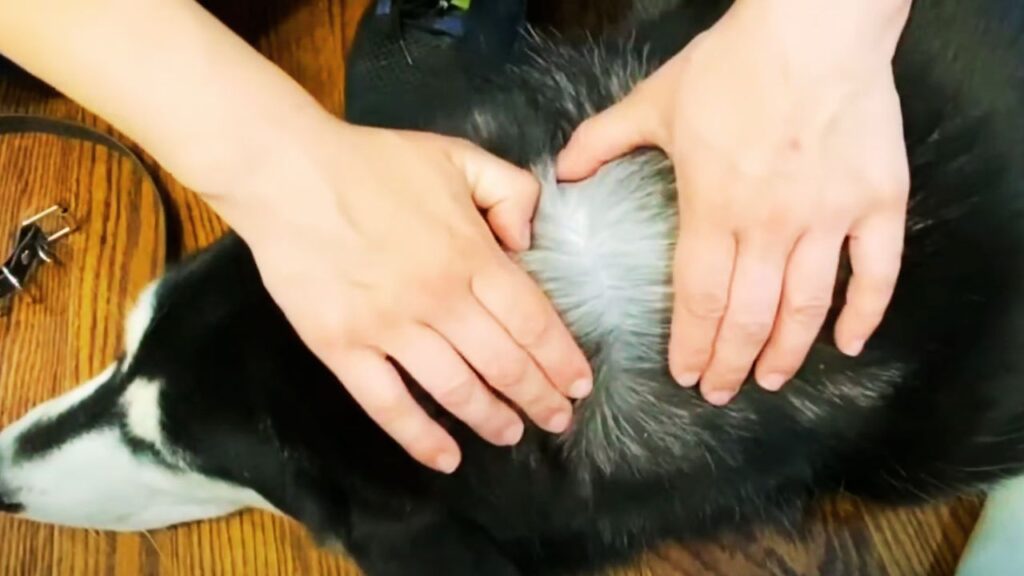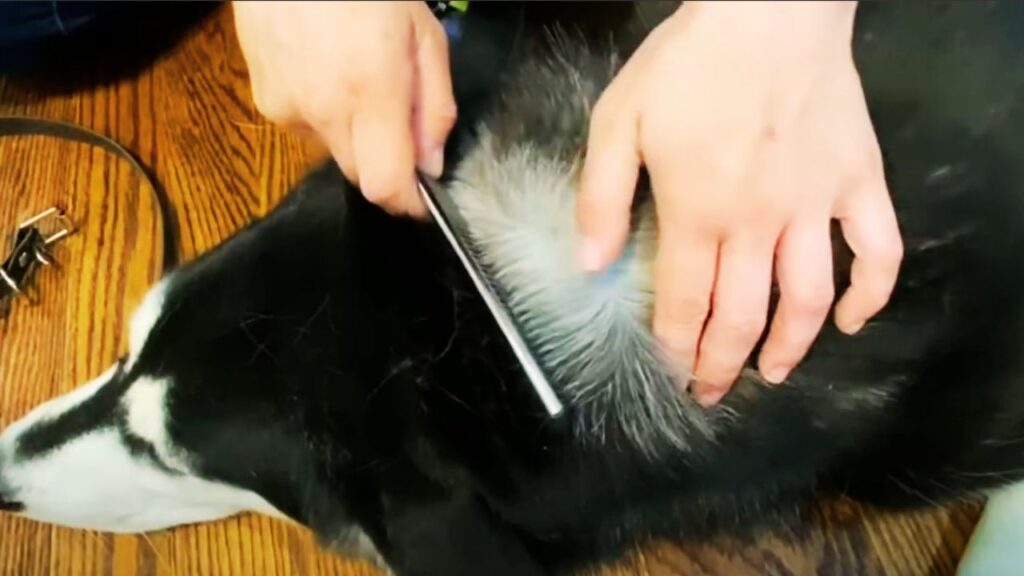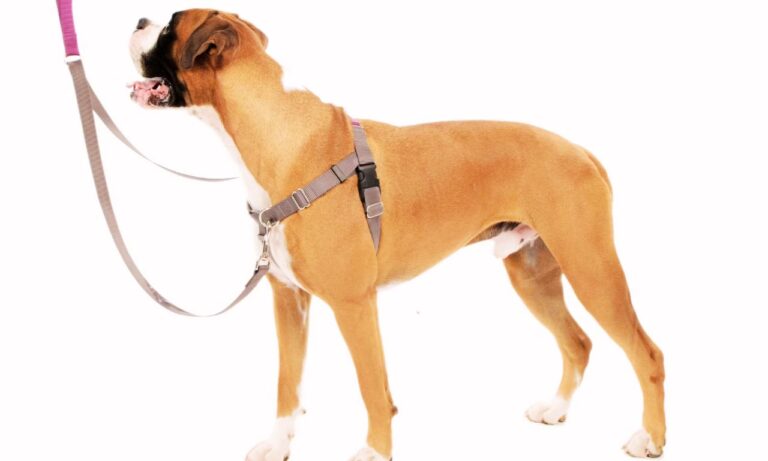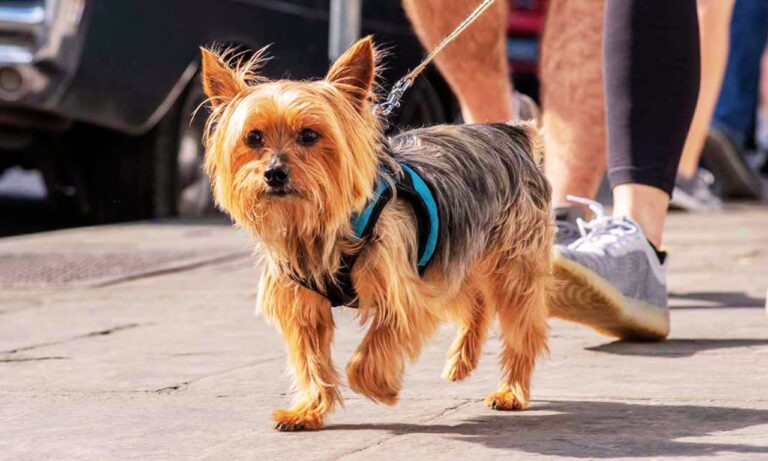When dealing with dogs with thick or long coats, using a shock collar effectively can become a challenge. Shock collars work by delivering a small electrical stimulation through metal prongs that must make contact with your dog’s skin to be effective. So, What if my dog’s fur is too thick for a shock collar?

However, thick fur, particularly on breeds with dense double coats like German Shepherds, Golden Retrievers, and Huskies, can prevent the prongs from reaching the skin, rendering the collar ineffective. Learn the best practices for putting a collar on thick-skinned dogs to ensure a comfortable and irritation-free fit.
These quick fixes can help ensure that your dog receives effective training, even with thick fur.
Blog Highlights
ToggleWhat If My Dog’s Fur is Too Thick for a Shock Collar | Solutions for Thick-Furred Dogs
Not all shock collars are designed for thick-coated breeds, so selecting one with longer prongs is essential. Many shock collars come with interchangeable contact points, including longer prongs that are specifically made to penetrate through thick fur and ensure proper skin contact.

So, What if my dog’s fur is too thick for a shock collar? These longer prongs help transmit the corrective signal effectively, especially for breeds with dense coats like Australian Shepherds and Cane Corsos. Brands such as SportDog and Educator E-Collars are known for offering collars with such customization options. Explore the Cane Corso growth and weight chart and nutrition plans.
1. Proper Fitting Techniques
Ensuring the collar is fitted properly is crucial for both the safety and effectiveness of the device. Use the “two-finger rule” when placing the collar around your dog’s neck; you should be able to slide two fingers between the collar and your dog’s skin with minimal resistance. The collar should be snug but not too tight to cause discomfort. Raking the prongs through the fur before fastening the collar can also help create better contact with the skin.
2. Shaving a Small Area
In some cases, especially with extremely thick or long-haired dogs, trimming or shaving a small patch of fur where the collar sits can be necessary. This doesn’t require shaving down to the skin, but simply removing the top layer of fur that might be blocking the prongs. It’s a practical solution for ensuring the collar works without discomforting your pet.
3. Using Comfort Pads for Sensitive Dogs
If your dog has sensitive skin or reacts poorly to metal prongs, consider using comfort pads. These pads are designed to redistribute the pressure from the prongs while still allowing the collar to function. Comfort pads are particularly useful for dogs that need to wear the collar for extended periods. They help to reduce irritation and prevent sores, which can be a concern when using shock collars over long sessions. Find out the best collars for Cane Corsos to suit their unique needs.
4. Gradual Intensity Adjustment
When using a shock collar on a dog with thick fur, you may need to adjust the intensity levels carefully. Since the collar may have trouble making solid contact at first, starting with the lowest setting and gradually increasing it until you see a response from your dog is essential. Avoid jumping straight to higher settings, as this could potentially cause unnecessary discomfort. Instead, increase the intensity in small increments, observing how your dog reacts.
How to Treat a Dog’s Fur That Is Too Thick for a Shock Collar
Managing a dog’s fur when it comes to using a shock collar can be a bit tricky, especially if your dog has a thick or dense coat. Shock collars are designed to deliver a mild electric stimulus as a training tool, but if your dog’s fur is too thick, it might interfere with the collar’s effectiveness. Fortunately, there are several ways to address this issue to ensure that your training sessions are both safe and effective. Learn how to put a collar on a Husky with these practical tips.
Understanding the Problem
Thick fur can act as a barrier, reducing the ability of a shock collar to deliver consistent and accurate stimulation. This can lead to two main issues:

- Inconsistent Stimulation: The collar might not make proper contact with your dog’s skin, resulting in uneven or insufficient stimulation.
- Reduced Effectiveness: The collar may not work as intended if it can’t penetrate the fur effectively.
It’s essential to address these problems to ensure your dog receives the intended feedback during training.
1. Proper Fitting and Adjustment
First and foremost, ensure that the shock collar is fitted correctly. A well-fitted collar is crucial for effective stimulation. Here’s how you can make sure it’s adjusted properly:

- Adjust the Collar Size: The collar should fit snugly around your dog’s neck without being too tight. You should be able to insert a finger between the collar and your dog’s neck. This ensures that the prongs make proper contact with the skin.
- Check Prong Placement: Ensure that the prongs are positioned correctly. They should be aligned with your dog’s skin and not too buried in the fur. If the prongs are not making contact with the skin, you may need to adjust the collar or the prongs.
2. Trim the Fur
If the collar is still not effective, trimming your dog’s fur around the collar area might be necessary. Here’s how to do it safely:
- Use Safe Grooming Tools: Use high-quality pet clippers or scissors designed for dog grooming. Avoid human hair clippers or scissors, as they may not be suitable for a dog’s dense fur.
- Groom Gradually: Trim the fur gradually to avoid cutting too close to the skin. Aim to trim just enough to ensure that the prongs make consistent contact with the skin. Be cautious not to irritate your dog’s skin.
- Seek Professional Help: If you’re unsure about trimming your dog’s fur yourself, consider visiting a professional groomer. They can trim the fur in a way that ensures the collar works effectively while keeping your dog comfortable.
3. Use Collar Pads
Some shock collars come with interchangeable collar pads or contact points. These pads can help improve the effectiveness of the collar by providing better contact with the skin.
- Choose the Right Pads: Select collar pads that are appropriate for your dog’s fur type and length. Longer contact points may be more effective for dogs with thicker fur.
- Regular Maintenance: Regularly check the condition of the collar pads. Clean them as needed to ensure they are free from dirt and fur buildup, which can affect their performance.
4. Consider Alternative Training Tools
If trimming the fur and adjusting the collar doesn’t solve the problem, consider using alternative training tools. Here are a few options:
- Vibration Collars: Vibration collars use vibrations rather than electrical stimulation. They can be effective for training and are less affected by fur thickness.
- Sound Collars: These collars emit a sound that can get your dog’s attention. They are not influenced by fur thickness and can be a good alternative for certain training situations.
- Harnesses: For some training purposes, a harness might be an effective tool, especially when combined with positive reinforcement methods.
5. Regular Monitoring and Adjustment
Keep an eye on how your dog responds to the shock collar over time. Regularly check the collar’s fit, the condition of the fur around the collar area, and the overall effectiveness of the training tool. Adjustments may be needed as your dog’s fur grows or changes.
- Monitor Skin Health: Ensure that the skin under the collar does not become irritated or sore. If you notice any redness or discomfort, it may be a sign that the collar needs adjustment or a different approach.
- Be Patient: Training with a shock collar should be done with patience and consistency. Ensure that the collar is used as part of a broader training strategy that includes positive reinforcement and clear commands.
Exploring Alternatives to Shock Collars for Thick-Furred Dogs
If your dog’s thick fur consistently interferes with the use of a shock collar, it may be worth exploring alternative training tools that are less affected by fur density. Here are a few options:

1. Vibration Collars
Vibration collars provide a non-shocking alternative that uses vibrations to get your dog’s attention. They can be just as effective for many types of training, especially for dogs with thicker coats. The vibrations are able to penetrate through the fur, ensuring your dog feels the feedback. This option is also more gentle and can be a good choice for sensitive dogs or those who react poorly to shock-based collars.
2. Sound or Ultrasonic Collars
Sound-based collars emit an audible tone or ultrasonic sound to grab your dog’s attention during training. These collars bypass the issue of thick fur altogether since they rely on sound rather than physical contact. Many dogs respond well to sound stimuli, especially when it is associated with training cues or behavior correction. Understand if the Cane Corso is a high-maintenance dog with this insightful guide.
3. Positive Reinforcement and Training Tools
In some cases, you might find that a more traditional approach using positive reinforcement (treats, praise, or toys) alongside physical tools like a harness or leash works better for your dog. These methods build trust and encourage desired behaviors without the need for collars that use electrical or physical stimuli.
By trying out these alternatives, you can find the right method to train your thick-furred dog effectively while ensuring their comfort and safety. Every dog is different, so it’s important to choose a tool that matches their unique needs and personality.
Wrapping Up!
If your dog’s fur is too thick for a shock collar, it’s essential to address the issue to ensure effective and humane training. Start by adjusting the collar for a snug fit and check that the prongs make proper contact with your dog’s skin. If necessary, consider trimming the fur around the collar area to improve contact and effectiveness. Hope so, now you know the answer: What if my dog’s fur is too thick for a shock collar?
Using specialized collar pads or exploring alternative training tools like vibration or sound collars can also be effective solutions. Regularly monitor your dog’s response and the condition of their skin to make any needed adjustments. By taking these steps, you can ensure that the training process is both efficient and comfortable for your dog. Discover the best collars for Siberian Huskies for both style and comfort.





